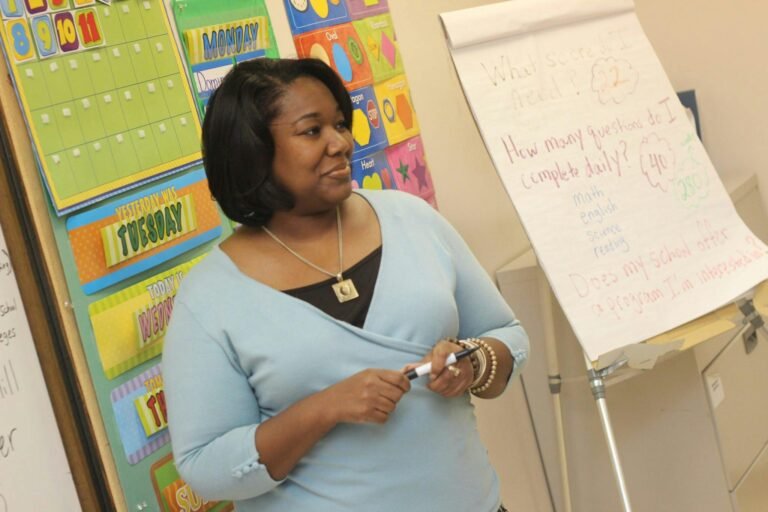Have you ever walked through a school and thought, “I’d love to lead a place like this someday”? Maybe you’re an experienced educator ready for the next step, or maybe you’re just beginning to explore leadership in education. Either way, if you’re passionate about improving schools, supporting staff, and helping students thrive, becoming a high school principal might be the right path for you.
It’s a big role — and a meaningful one. As a principal, you’re not just managing a building. You’re shaping a culture. You’re leading a team. And you’re helping create the kind of environment where students can learn, grow, and feel seen.
So what does that actually look like day to day? Let’s break it down.
Thinking About Becoming a High School Principal? Here’s What You Should Know
What Does a High School Principal Really Do?
No two days are exactly the same when you’re a principal — and that’s part of what makes the job both challenging and rewarding. While the specific responsibilities can vary depending on the school, district, and state, here are some of the core duties most high school principals take on:
- Leading the staff: Hiring, mentoring, and evaluating teachers and support staff
- Managing the school’s budget, resources, and operations
- Overseeing curriculum implementation, student assessment, and academic performance
- Supporting student behavior systems and creating a safe, inclusive campus culture
- Working closely with families, community partners, and district leaders
- Making sure the school complies with laws and policies (like Title IX, IDEA, ADA, etc.)
- Facilitating professional development and school improvement planning
- Being the face and voice of the school during tough times — and proud moments
In short: you’re setting the tone, building the systems, and supporting the people who make learning possible.
What Education and Experience Do You Need?
Most high school principals begin their careers in the classroom. If you’ve spent time as a teacher, instructional coach, or assistant principal, you’ve already started building the foundation.
Here’s what’s typically required:
- A master’s degree in educational leadership, administration, or a related field
- A valid teaching license and often a school administrator credential (requirements vary by state)
- Several years of teaching experience (usually at the secondary level)
- A strong understanding of school laws, instructional leadership, and data-informed decision-making
- Successful completion of background checks and other district-level requirements
If you’re just starting out in your teaching career but dream of becoming a principal someday, you’re not behind — you’re just building the experience that will shape the kind of leader you’ll be.
What Makes Someone a Great Principal?
The best principals lead with heart, strategy, and resilience. Here are a few qualities that make for a strong fit in the role:
- People-first mindset: You enjoy working with students, teachers, and families — even when the conversations are hard.
- Big-picture thinking: You see how policy, instruction, operations, and culture all connect.
- Problem-solving skills: From a broken copier to a sudden staffing shortage, you can pivot and plan quickly.
- Leadership presence: You inspire trust, communicate clearly, and know how to listen as much as you talk.
- Commitment to equity: You believe every student deserves to feel safe, supported, and challenged to succeed.
You don’t need to be perfect at all of these things — but having the desire to grow in these areas is key.
Is This Role Right for You?
Becoming a principal is a big step. It comes with a lot of responsibility — but also a real chance to shape a school’s future.
You might thrive as a principal if you:
- Enjoy both leading and learning
- Want to influence student success on a schoolwide level
- Feel excited about supporting and growing teachers
- Can juggle details, people, systems, and long-term vision
- See challenges as opportunities, not roadblocks
You might want to learn more if you:
- Haven’t had much experience managing adults yet
- Are unsure how administrative work fits into your strengths
- Prefer working directly with students more than leading staff
There’s no one-size-fits-all path, and many principals discover their leadership voice over time.
Organizations and Resources to Help You Explore
If you’re considering a career as a principal or looking to grow in your current role, these national organizations can be great sources of support, training, and connection:
- National Association of Secondary School Principals (NASSP) – Supports middle and high school leaders through resources, advocacy, and leadership development.
- American Association of School Administrators (AASA) – Offers support and policy insight for superintendents and system-level leaders.
- National Association of Elementary School Principals (NAESP) – While focused on PreK–8, NAESP provides leadership resources that can be useful at all levels.
You can also look into state or regional leadership academies, mentorship programs, and administrative certification pathways through your district or department of education.
In Closing: Leadership Starts with Belief
Being a high school principal isn’t just a job — it’s a commitment to a whole community. It takes strength, empathy, planning, and passion. But if you’re someone who wants to lead with purpose and leave a legacy that stretches far beyond the school day, this could be a role where you truly thrive.
Whether you’re just beginning to explore school leadership or you’re actively pursuing it, keep asking questions, seeking mentors, and imagining the kind of school you’d be proud to lead.
You belong in those conversations — and one day, maybe even in that principal’s office.
Looking to explore more careers in education?
Browse our full Career Exploration Series for guides on roles in schools and school-adjacent organizations — including teaching assistants, counselors, custodians, and more







